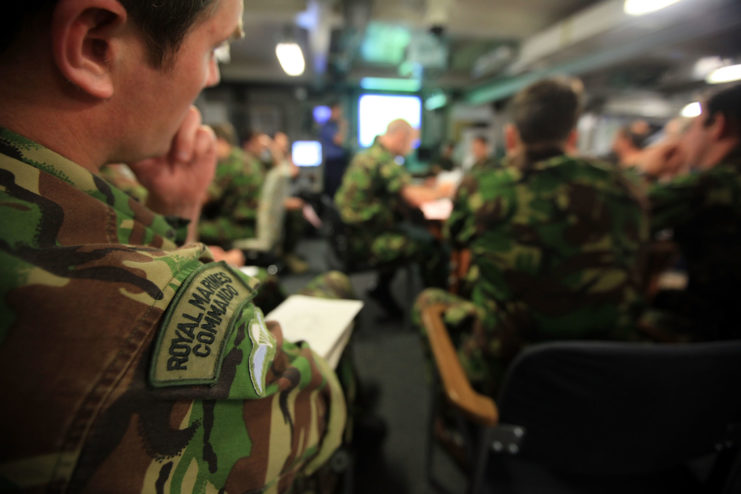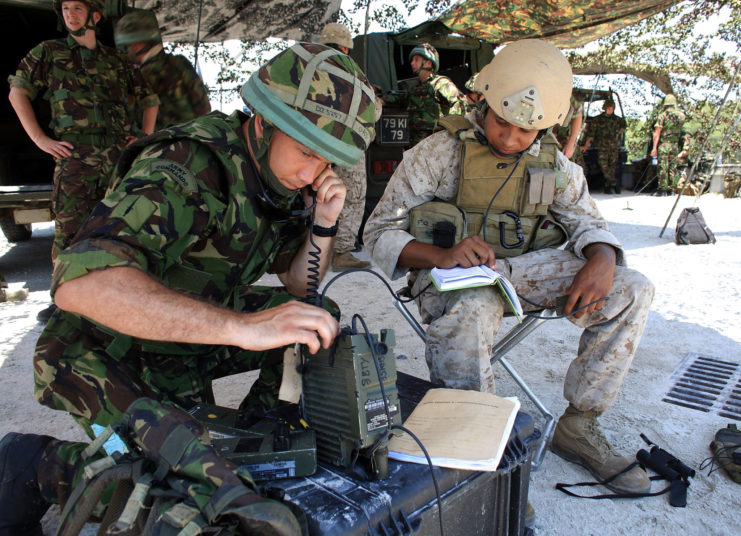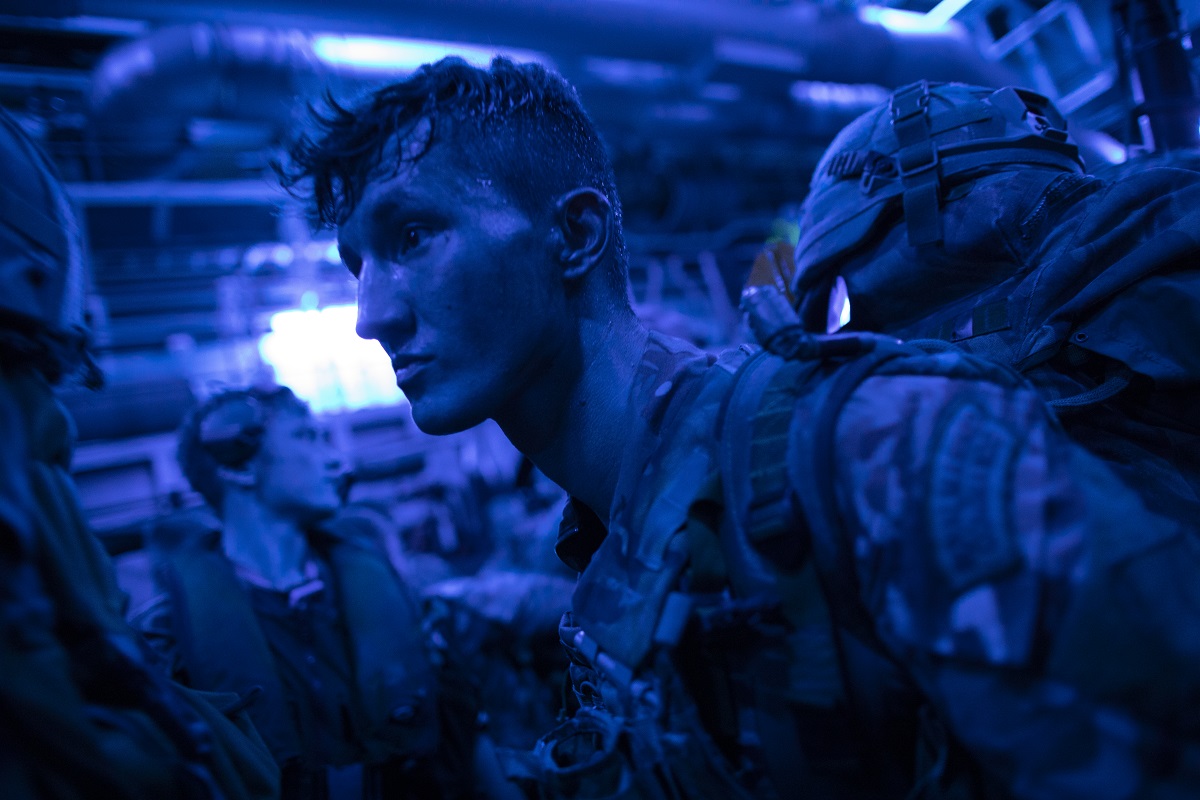In a mock that occurred last week, the British Royal Marines commandos and its allies triumphed over the US Marine Corps. The engagement took place in a huge Californian training facility, and pit the Marine Corps against Britain’s commandos and Dutch marines. The battle ended with British forces establishing control over the majority of the battleground, forcing the US Marines to surrender.
The battle, named Exercise Green Dagger, allowed Britain to test their new Littoral Response Group (LRG) in guerrilla warfare conditions in the enormous Twentynine Palms base in California. In addition, the battle was also used to test the US Marines Corps (USMC) before being deployed overseas.
Before the exercise took place the troops had spent two months training in the Mojave Desert.
The LRG is a new Royal Navy group with the ability to quickly react to the many different threats faced by modern militaries. When ready, two of these groups will be active, with one in Europe (LRG North) and the other in Oman (LRG South), for quick access to the Suez Canal.
LRG South was built from the Taunton-based 40 Commando and was the group that participated in the five-day-long Green Dagger. Troops from Canada, the US, the Netherlands, UAE, and Britain were involved in the operation.
Reportedly, the Royal Marines dominated the mock battle.
Exercise Green Dagger

To maintain authenticity and clearly indicate the results of the battle, the combatants involved used training ammunition that fires paint projectiles. This non-lethal ammunition is fired at reduced pressure and speed.
Their battleground was over a 3,500 square kilometer area, filled with mountains, deserts, and urban environments. Inside the training area were independent actors who portrayed civilians. These “civilians” could choose to help or hamper the troops at will.
The start of the battle saw the Royal Marines immediately take the lead, but eventually, the USMC worked their way into their territory.
To stop these advances, the British and their allies sent probing raids behind enemy lines, wreaking havoc on their opponent’s headquarters. They took out the Marines Corps’ assets critical to formulating their attacks.
The battle ended after a Marine Corps advance was stopped, leaving the Royal Marines in control of 65 percent of the area, even though they only started with 20 percent.
Lieutenant Colonel Andy Dow, Commanding Officer of 40 Commando said “Our success has proved the new commando force concept is more lethal and sophisticated than ever before and I am immensely proud of every member of the LRG and their vital contributions.”
“Operating alongside our partners from the USA, Netherlands, Canada, and the UAE gives us a fantastic opportunity to test, integrate and continue to push our capabilities in new and innovative directions.
“Throughout this deployment, our focus has been on integrating game-changing capabilities from across the commando force to deliver disproportional effect in the face of a free-thinking peer adversary.”
Unfair judgment on the Marine Corps

Although the Royal Marines won a landslide victory, it is perhaps an unfair way to judge the Marine Corps’ abilities. Currently, there are a few unknowns that can dramatically change opinions on the outcome, like how much support each side received.
In addition, the inherent differences between the Marine Corps and the Royal Marines should not be forgotten.
The Marine Corps is one of the US military’s six branches and is under the authority of the US Navy. This 180,000 strong force is smaller and more mobile than the US Army but is similar in capabilities. USMC recruits go through a tougher and longer training camp than the Army though.
Meanwhile, the Royal Marines are a much smaller (only around 8,000 members) and specially trained force. These exceptionally well-trained commandos are some of the most elite troops in the British Armed Forces and have a very different role to the USMC.
Therefore, depending on the exact circumstances, it should come as no surprise that the Royal Marines bested the United States Marine Corps in battle.
